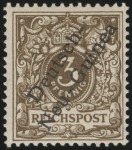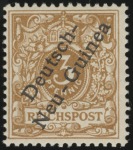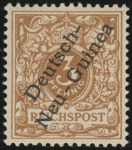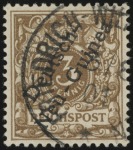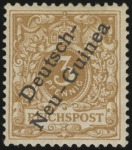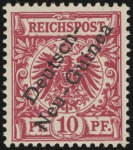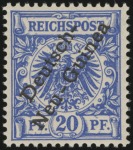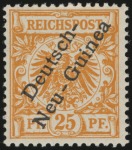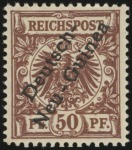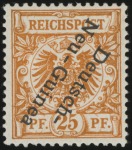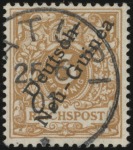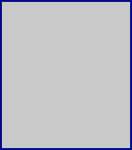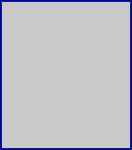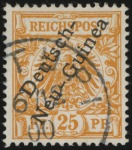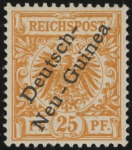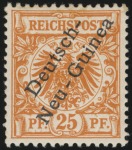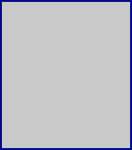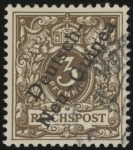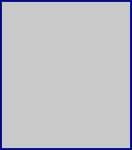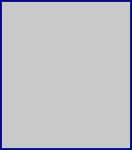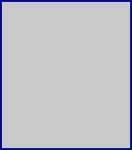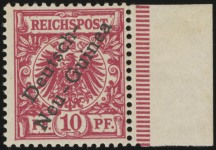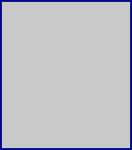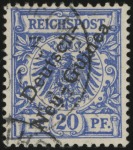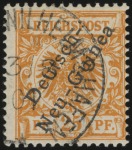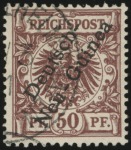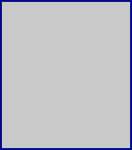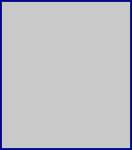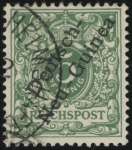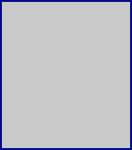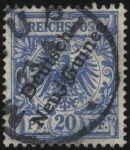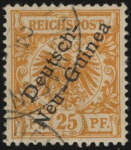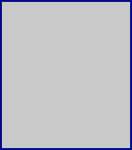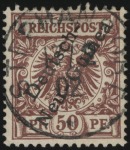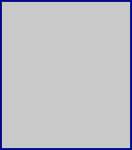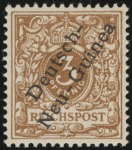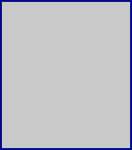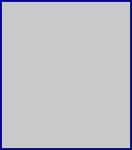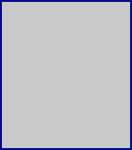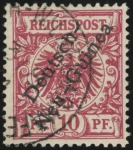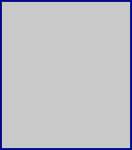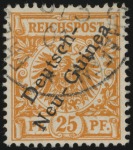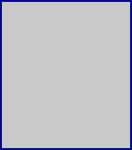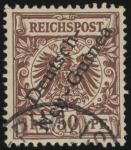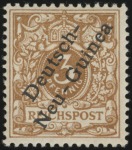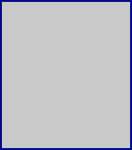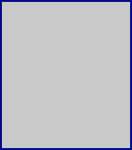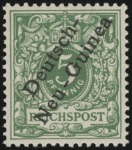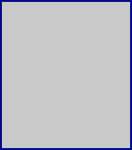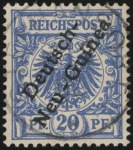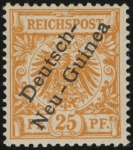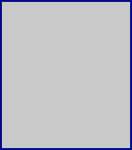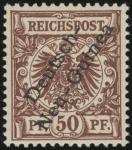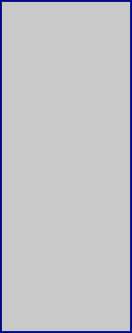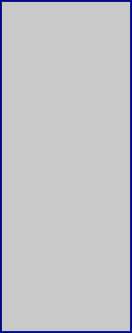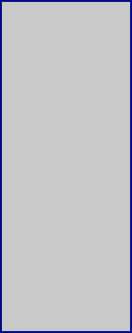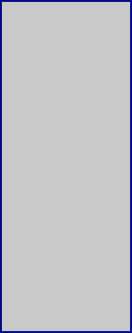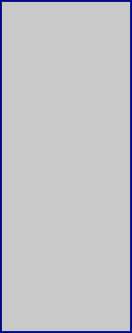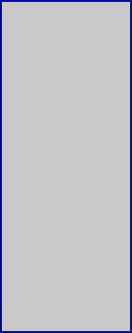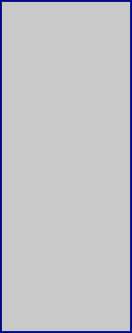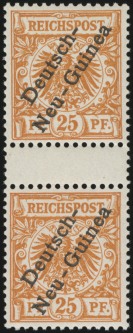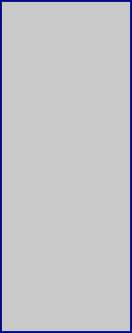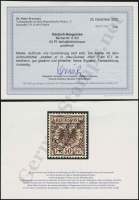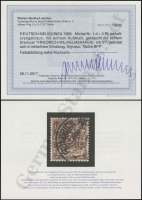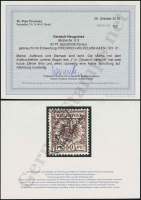1897 / 1899 Krone / Adler Overprints
The first stamps issued for use in German New Guinea were overprints of German Krone / Adler issues.
They were first issued in September 1897. As with the Krone / Adler issues, multiple color variants exists due to the various printings.
The period of use for these stamps was short-lived, as they were replaced in December 1900 by the first Yacht issues.
A single 10x10 sheet of MiNr. 5 b was printed with an inverted overprint.
The 3 Pf and 25 Pf can be found with plate flaws on the underlying stamps.
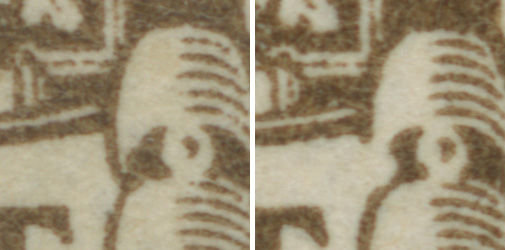
MiNr. 1 Plate Flaw I — broken scroll (right)
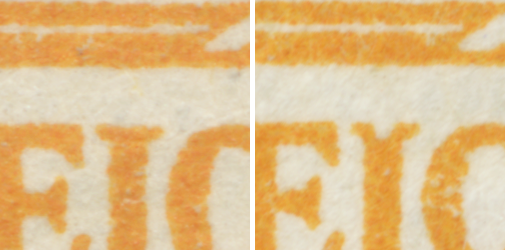
MiNr. 5 Plate Flaw II — break in “I” (right)
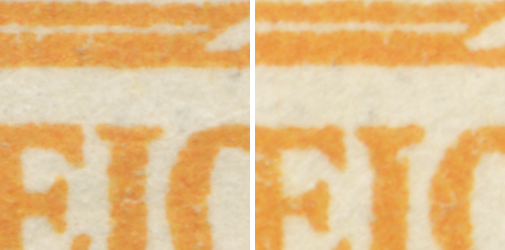
MiNr. 5 Plate Flaw III — damaged “I” (right)
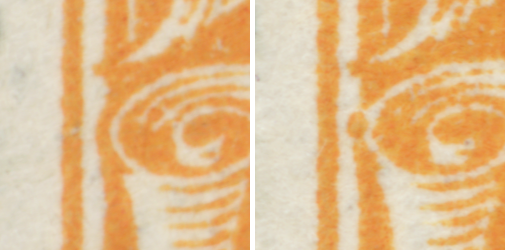
MiNr. 5 Plate Flaw IV — dot next to lower left scroll (right)
In addition, numerous overprint flaws exist across all values.
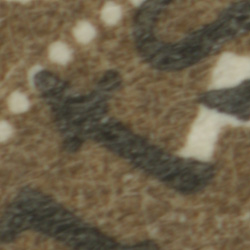
Overprint Flaw X — short foot on “t”
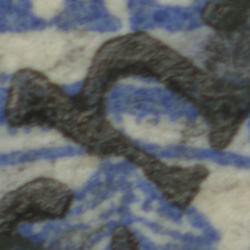
Overprint Flaw XI — damaged leg on “h”
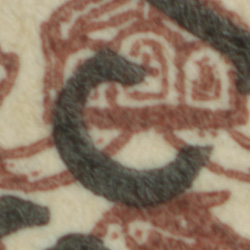
Overprint Flaw XII — short foot on “c”
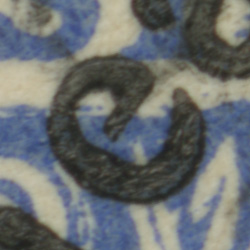
Overprint Flaw XIII — open “e” in “Guinea”
These stamps were printed in 10×10 sheets, with two sheets per printing pane, arranged vertically. As a result, gutter pairs (in German, Zwischtenstegpaare) exist containg stamps from the bottom row of the top sheet and the top row of the bottom sheet.
1897 / 1899 Krone / Adler Overprints
The first stamps issued for use in German New Guinea were overprints of German Krone / Adler issues.
They were first issued in September 1897. As with the Krone / Adler issues, multiple color variants exists due to the various printings.
The period of use for these stamps was short-lived, as they were replaced in December 1900 by the first Yacht issues.
A single 10x10 sheet of MiNr. 5 b was printed with an inverted overprint.
The 3 Pf and 25 Pf can be found with plate flaws on the underlying stamps.

MiNr. 1 Plate Flaw I — broken scroll (right)

MiNr. 5 Plate Flaw II — break in “I” (right)

MiNr. 5 Plate Flaw III — damaged “I” (right)

MiNr. 5 Plate Flaw IV — dot next to lower left scroll (right)
In addition, numerous overprint flaws exist across all values.

Overprint Flaw X — short foot on “t”

Overprint Flaw XI — damaged leg on “h”

Overprint Flaw XII — short foot on “c”

Overprint Flaw XIII — open “e” in “Guinea”
These stamps were printed in 10×10 sheets, with two sheets per printing pane, arranged vertically. As a result, gutter pairs (in German, Zwischtenstegpaare) exist containg stamps from the bottom row of the top sheet and the top row of the bottom sheet.

